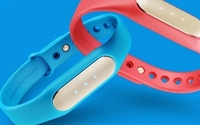 Wearables are a relatively big deal.
Wearables are a relatively big deal.
This
doesn’t mean that everyone will be wearing something with embedded sensing technology any time soon.
However, the size of the market continues to grow even as it evolves into what is
being worn.
One of the hottest wearable devices, of course, is the Apple Watch, which Best Buy will be selling in all of its 1,000 big box stores by the end of next month.
Apple will
sell around 20 million watches by the end of this year, according to a forecast by CCS Insight. That would account for a quarter of the wearable market. That forecast has sales of wearables growing to
172 million in three years.
But for wearable devices, Fitbit still leads the pack, with 25% of the market compared to Apple at 20%, at least in the number of devices shipped, according to new
figures from IDC.
One study, based on product reviews rather than units shipped or purchased, concludes that consumer demand for wearables has dropped considerably since the beginning of the
year.
Another recent study, a survey of 19,000 people over the last year conducted by CivicScience, also found that most adults are not likely to purchase a wearable fitness tracker in the
next year, as I wrote about here last week (11% Plan to Get a Wearable Fitness
Tracker, 71% Don’t)
But even if most people don’t buy into wearables doesn’t mean it’s not a big deal. While the percentages may not hit majority level, the numbers
are huge.
One potential gauge of the future size of the market is the shipment number of the sensors that go into the wearable devices. The worldwide market for those sensors has been
estimated by IHS Technology to reach 466 million in four years, an increase from 67 million just two years ago.
Within five years, the wearable market will grow from 18 million shipments two
years ago to 197 million, according to the research firm Tractica (Wearable &
Leading to the Marketing Messaging).
Even if these estimates are off by 50 million or even 100 million, the numbers are massive.
Along with wearables comes marketing, since the
messaging that drives wearables is still in its very early stages.
This means there will be an opportunity to reach, interact with and serve millions of consumers. Up close and personal.